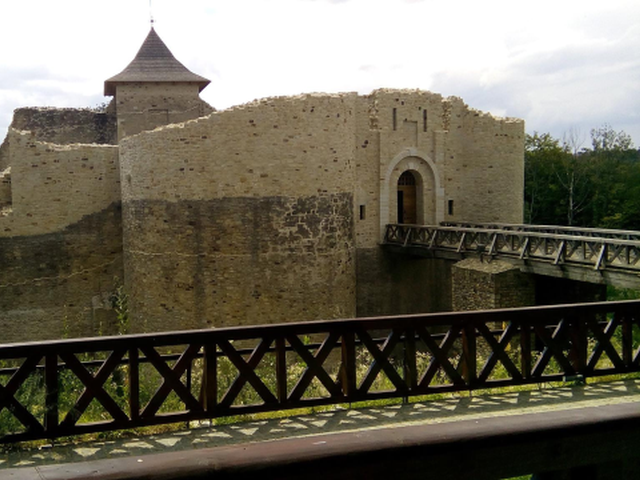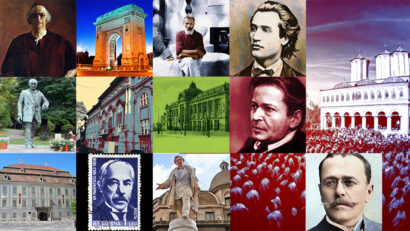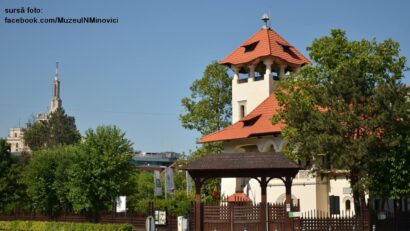The Citadels of Stephen the Great
Fortifications, forts, redoubts and citadels played a very important role in warfare until the early 20th century.

Steliu Lambru, 18.05.2019, 13:06
Fortifications, forts, redoubts and citadels played a very important role in warfare until the early 20th century. Fortifications were used even in the great world wars of the past century. They helped military leaders protect their countries borders, ensure the populations security and defend economic interests.
One of the first Romanian medieval princes who thought out and implemented an articulated fortification system was Stephen the Great, who ruled Moldavia in the 2nd half of the 15th century and the early 16th century.
Like any genuine political leader, Stephen the Great first consolidated the capital, the Citadel of Suceava, located in the north of todays Romania. The first fort had been erected as early as the end of the 14th century by Prince Petru Muşat. Subsequently, Stephen the Great extended the citadel adding an enclosure wall that made the citadel harder to conquer. The enclosure wall had bastions and battlements and was surrounded by moats. Within the citadel, ammunition and weapon storage depots as well as a powder depot were subsequently built. Suceava Citadel withstood the Turkish offensive of 1476 and the Polish attacks of 1485.
Another citadel fortified by Stephen the Great was Neamţ Citadel, 70 km south of Suceava. Like in Suceava, the oldest fort had been erected by the same Petru Muşat, and Stephen the Great built the defensive wall and deepened and widened the moat. The citadel resisted the Ottoman attack of the 1476 campaign waged by Sultan Mehmet II against Stephen the Great.
The 3rd citadel in the north of Moldavia that was extended by Stephen the Great is Hotin, which now belongs to Ukraine and which is located 115 km north of Suceava. There too Stephen the Great extended, elevated and widened the defensive walls. Hotin citadel also resisted the 1476 Turkish campaign. Stephen the Greats 4th citadel in the Suceava area was Roman, built from wood and clay in 1466, at 95 km south of his residence. The fortification lay in a plain area, close to Siret River, and was made up of 7 towers connected by walls which were surrounded by moats. The fortification was used as an outpost.
Stephen the Greats citadels were meant to defend Moldavia from enemies coming from the four cardinal points. The prince attached great importance to the citadels on the Dniester and Danube rivers as well.
The Tartars invasions from the east caused the biggest damage to Moldavia. Historian Gheorghe Postică from the Free International University in Chisinau, the Republic of Moldova, studied the fortifications on the Dniester and the Danube.
Gheorghe Postică: “The defensive system on the Dniester, a line built from north to south, from the mountains to the sea, was not something accidental. It clearly delineated two spaces: the Romanian space and the space of a different origin located beyond the Dniester, even beyond the Bug and the Dnieper. The citadels reinforce the existence of two worlds, a delineation that occurred in the early Middle Ages and continued through the late Middle Ages.
Stephen the Greats 4 citadels on the Dniester show the importance of securing the eastern border and Moldavias expansion towards the river. Besides the Hotin Citadel, which had to also defend the north of Moldavia, ruler Stephen the Great relied on the citadels in Soroca, Orhei, Tighina and Cetatea Albă. The latter together with the citadel in Chilia were meant to defend the south of Moldavia on the Danube, while the Crăciuna citadel, won over from Wallachia, from the Vrancea and Sub-Carpathian area, was meant to defend the southern land border with Wallachia.
Gheorghe Postică believes that Soroca was built in the style of western citadels by constructors from the Romanian side of Transylvania.
Gheorghe Postică: “Soroca citadel was built in the same fashion as the Italian citadels. Despite its unusual shape, the citadel is a common one. During the Medieval Period, in the European countries, the stone citadels were often erected by professional constructors from other regions or countries. This happened in England, France and Germany. Soroca was erected by builders from Bistriţa, as shown on an inscription.
Stephen the Greats citadels were Renaissance models of state defense, of warfare and of economic, cultural and scientific consolidation. During the Ottoman expansion, many of the citadels were left derelict and others were demolished. These citadels, considered historical monuments, are now being refurbished.
(translated by: Lacramioara Simion)





























